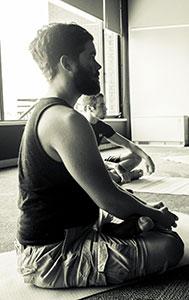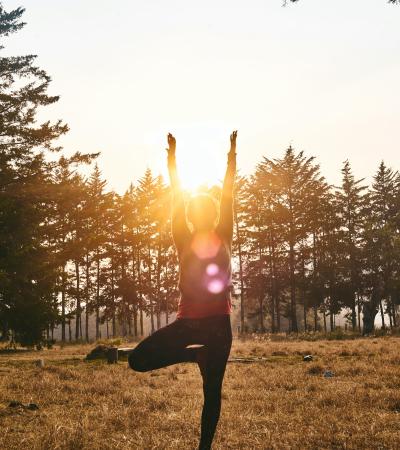
I have been teaching meditation as part of Yoga in the Library programs for many, many years, including in classes for children. I also teach meditation techniques to staff. Unsurprisingly, library staff are stressed. (I know, right?)
Meditation and mindfulness, even if they are only a focus on the breathing and awareness of the body during a class, are an essential part of yoga. But I often get requests to teach classes on just meditation. I have been an on-again, off-again meditator on my own and through my local Shambhala centre — though of course I never introduce any Buddhist doctrine into library programs, since they are always non-denominational, and I consider myself a Buddhist-Agnostic anyway. Here's a little sample of what has and hasn't worked in the meditation programs I’ve done.
I once invited author Rick McDaniel to teach Zen meditation to the jumpy, stressed-out students in the library at the New Brunswick College of Craft and Design. I had about 10 students come, and they overwhelmingly said it was helpful. When I followed up to ask if they wanted more sessions, the consensus was that no one had time.
My most popular classes are always Intro to Meditation workshops for adults and Mindful Child/Mindful Parent workshops, where I teach parents and children games and rituals to make them more aware of their feelings and their actions. These are always filled with big group hugs and sometimes tears and thank yous. It is palpable how much families need this sort of connection. My family yoga classes are also popular for this same reason. I have tried teaching yoga and meditation to teens, but usually no one shows up.
There are many forms of meditation, and none of them are right or wrong. You could try offering different types and see what your community likes.
I teach my own bastardized form of Zen meditation in my yoga classes and meditation workshops. We follow the breath and stare into the void. We don't chant. We don't repeat mantras. We just breathe. We sit in chairs or on the floor (depending on the age or flexibility of the group). We place our hands in our laps or on our thighs. And we breathe. Try it now. I'll wait.

And then we notice ourselves thinking, just like you are now, reading again. And then we go back to the breath. Ebb and flow. Watching the moving pictures, the emotions, the anxieties as they arise and then watching them go, like clouds passing across the sky. We don't get too worked up about anything. The mind, after all, is a tool. We can use it. Or we can just watch it, scanning the horizon, looking for danger or problems to solve. And we can think, "How fascinating!"
After 10 minutes I ring the bell, and then we do walking meditation, in circles, around and around the room, with our hands behind our backs or held in front of our tummies. I've had remarks that from the circulation desk it looks like we're either in a cult or I'm holding some sort of really boring zombie party. Sometimes my staff members try to catch my eye through the glass and make me laugh. Then I ring the bell, and we sit for another 10 minutes.
The meditation session lasts 40 minutes or so, longer if there are new people who need instruction at the beginning. Always with the same format of 10 sit/10 walk/10 sit/10 walk, done. Everyone smiles, looks a little calmer, goes home. The problem is, everyone wants to come, but no one does regularly. So I experiment with times, days, seasons. We take the summer off so everyone can go relax at the beach. Because, let's face it: meditation is boring. As Rick McDaniel once told me: It's the easiest thing in the world to sit and just breathe, that's why no one does it. Because it is also the hardest thing in the world. Ah, the Zen paradox.



